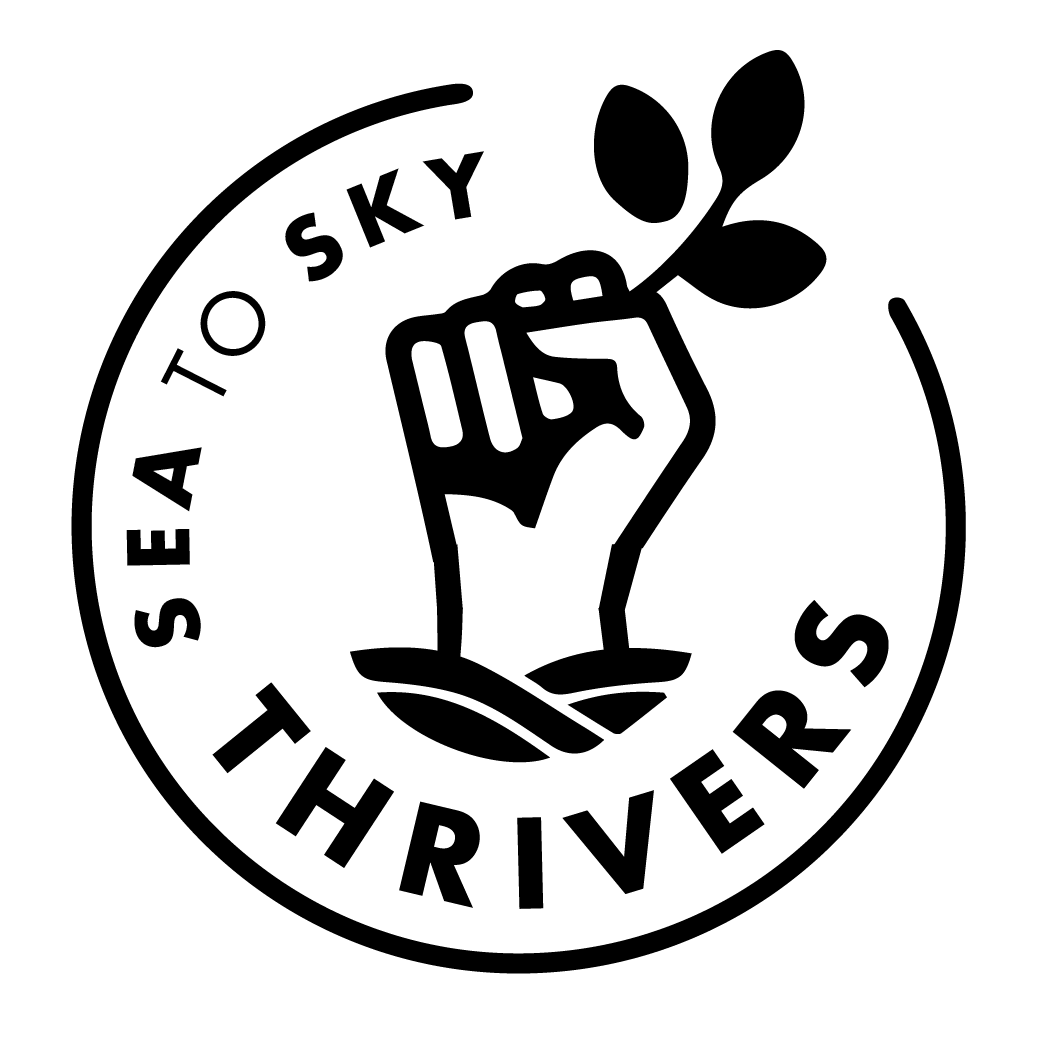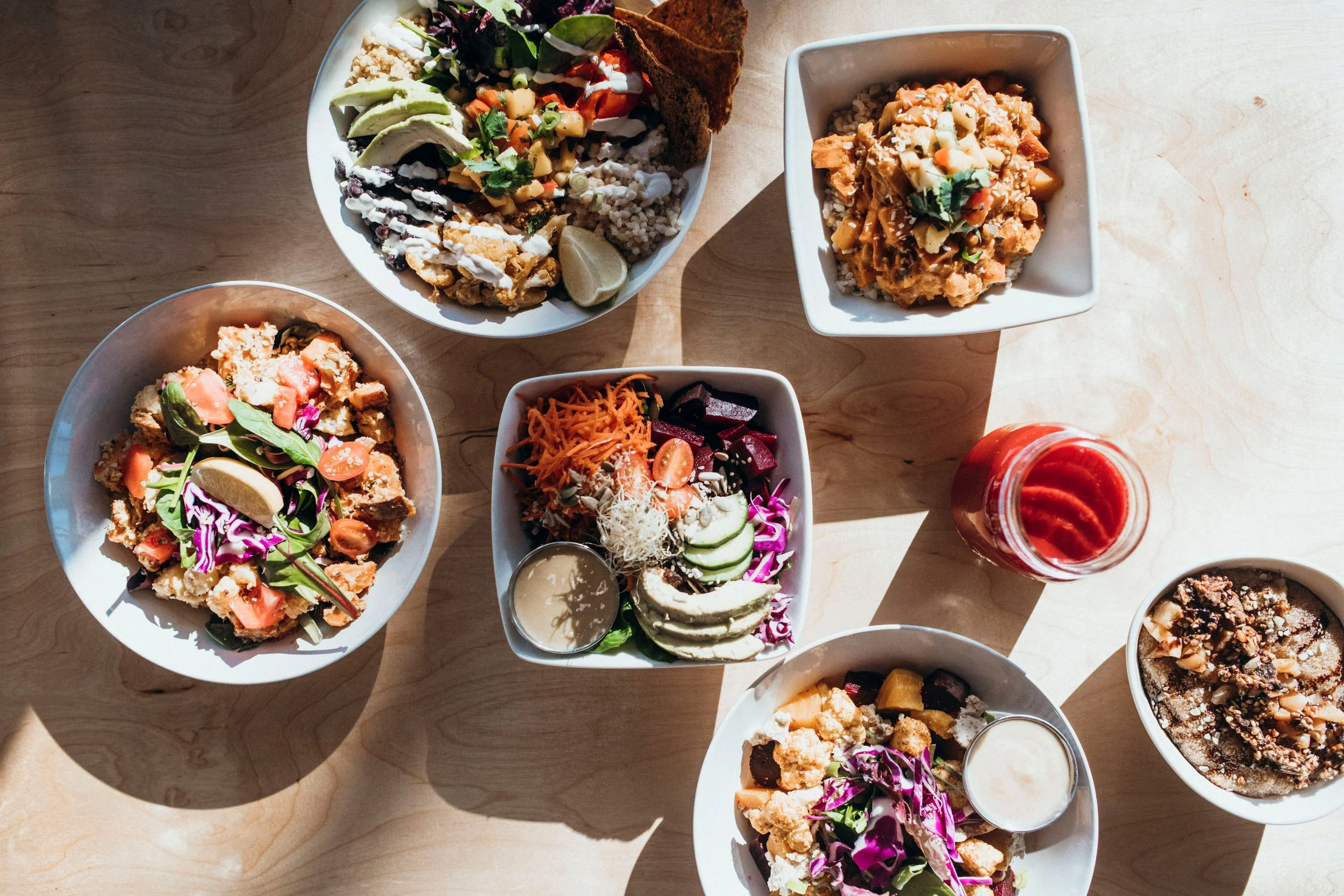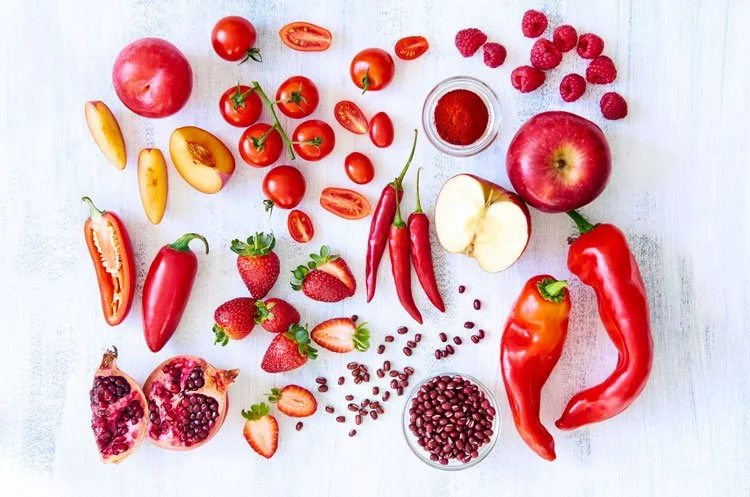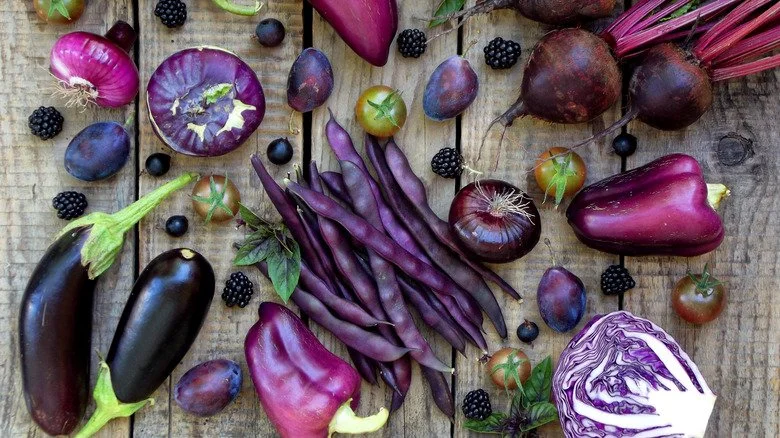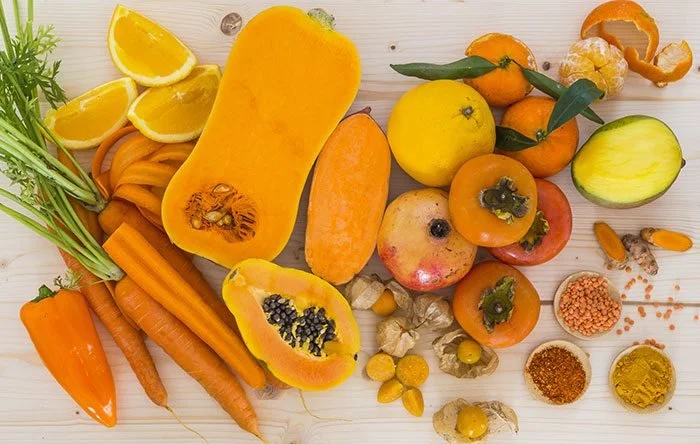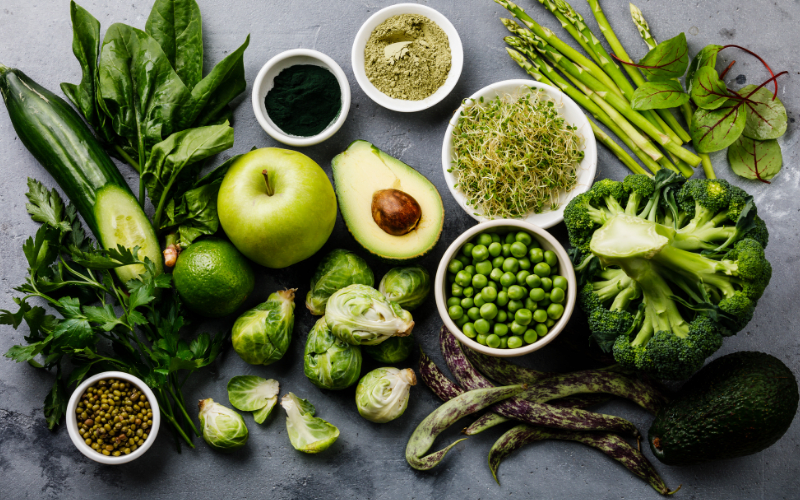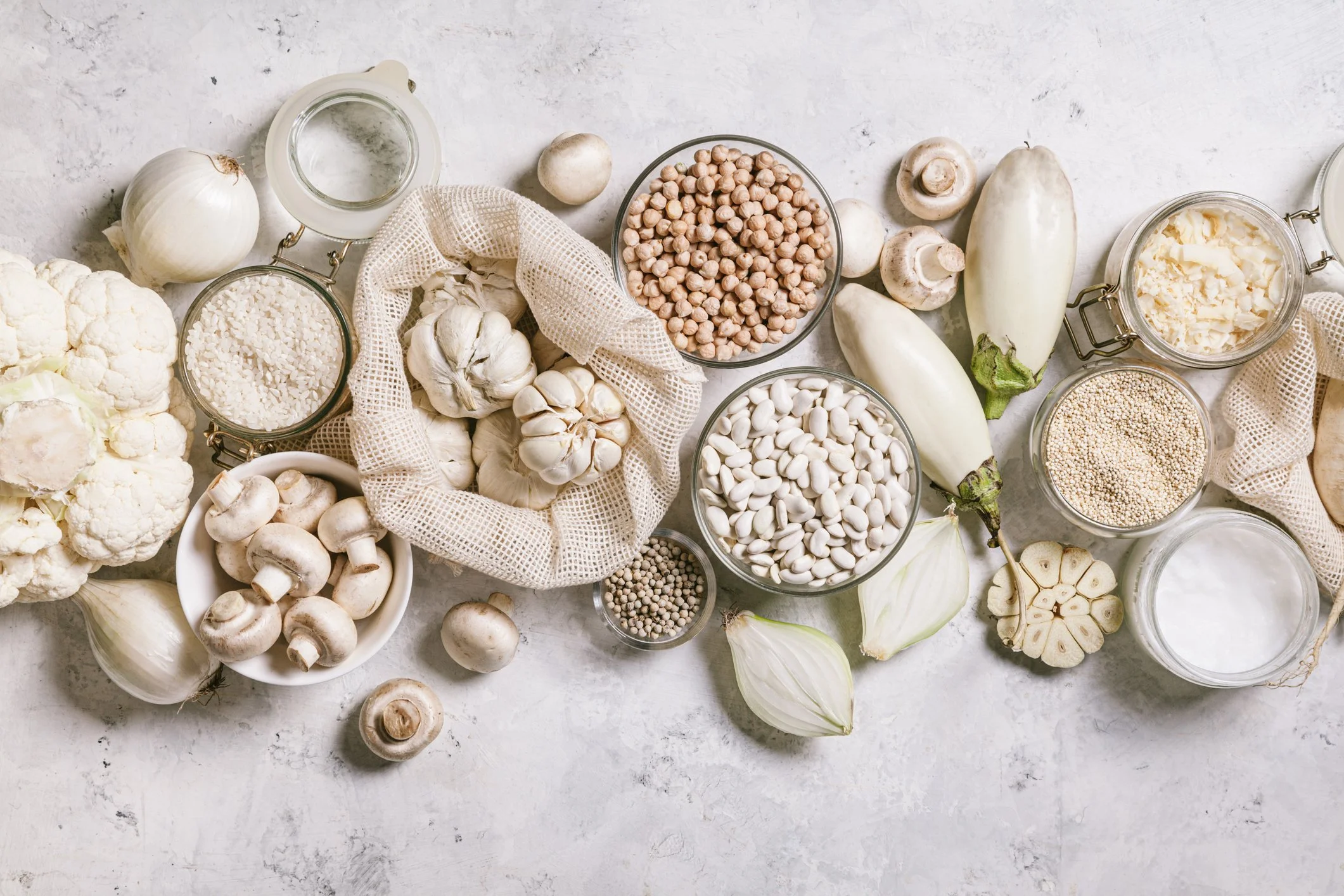EAT A RAINBOW
At Sea to Sky Thrivers’ we believe eating nutritious organic fruits and vegetables is the best way you can invest in your health – fueling your body with a broad spectrum of antioxidants, phytonutrients (aka phytochemicals), vitamins, minerals, and fibers.
Canada’s Food Guide recommends we eat seven to ten servings of fruit and vegetables a day. But those guidelines often prove tough for many Canadians. Shockingly, only 39.5% of Canadians (approximately 11.2 million people) eat five or more serving of fruits and vegetables per day (1).
The amount of vegetables you eat isn't the only thing you need to take into consideration. You also need to consume fruits and vegetables in a variety of different colors. Since childhood, we’ve been told to “eat your greens!”, but what about our oranges, whites, browns, reds, purples and blues? As creatures of habit, it’s easy to get stuck in a routine of eating the same types of fruits and vegetables over and over again.
So, what does color have to do with diet? One word: phytonutrients. The term phytonutrients is a broad name for a variety of compounds produced by plants. They’re found in fruits, vegetables, beans, grains and other plants. Each phytonutrient comes from a variety of different plant sources and has different proposed effects on, and benefits for, the body. More than 100,000 phytonutrients are found in plant foods (2). Common phytonutrients include carotenoids, ellagic acid, flavonoids, resveratrol, glucosinolate and phytoestrogens.
Because each color of the rainbow represents a unique pigment range and broad array of different nutrients, we should aim to eat each and every color every day. The World Health Organization attributes 1.7 million or 2.8 percent of deaths worldwide to low fruit and vegetable consumption and considers it one of the “top ten risk factors contributing to attributable mortality” (3).
EXPAND YOUR PALETTE WITH COLOUR
RED
Lycopene is the predominant pigment in reddish fruits and vegetables. A carotenoid, lycopene is a powerful antioxidant that has been associated with a reduced risk of some cancers, especially prostate cancer, and protection against heart attacks (4).
Examples: tomato, red capsicum, radishes, strawberries, rhubarb, cherries, red grapes, raspberries, watermelon, and red apples.
Photo Credit: isabelsmithnutrition.com
PURPLE/BLUE
The blue/purple hues in foods are due primarily to their anthocyanin content. The darker the blue hue, the higher the phytochemical concentration. Anthocyanins are antioxidants that are particularly heart-healthy and may help support healthy blood pressure (5). Blueberries are considered to have the highest antioxidant activity of all foods.
Examples: beetroot, red cabbage, eggplant, purple asparagus, blackberries, blueberries, purple grapes, and plums.
Photo Credit: @ana_reisdorf
ORANGE
Carotenoids give this group their vibrant color. Carotenoids act as anti-oxidants and have strong cancer-fighting properties (6). Some carotenoids are converted by the body to vitamin A, which is essential to vision and normal growth and development. Carotenoids also have anti-inflammatory and immune system benefits and are sometimes associated with the prevention of cardiovascular disease (7).
Examples: rockmelon, lemons, sweet potatoes, pumpkin, pineapples, mangoes, corn, oranges, squash, peaches, nectarines, apricots, and grapefruit.
Photo Credit: cleanplates.com
GREEN
Green vegetables contain a range of phytochemicals, including carotenoids, indoles, and saponins, all of which have anti-cancer properties (8). Leafy greens such as spinach and broccoli are also excellent sources of folate.
Examples: spinach, asparagus, avocados, broccoli, peas, green apples, green grapes, limes, kiwifruit, green beans, lettuce, cabbage, celery, cucumber, and green capsicum.
Photo Credit:www.sanitarium.com
BROWN/WHITE
White fruits and vegetables contain a range of health-promoting phytonutrients such as allicin (found in garlic) which is known for its antiviral and antibacterial properties. Some members of the white group, such as bananas and potatoes are a good source of potassium.
Examples: Cauliflower, brown pears, mushrooms, white peaches, garlic, bananas, potatoes, dates, onions, ginger, parsnips, turnip.
Photo Credit: www.akuawoolbright.com
3 WAYS TO ADD MORE COLOR TO YOUR LIFE
1. Color your grocery list: When you plan your grocery list, make a note of which colors you are purchasing. Make an effort to include a few items from every color.
Kid Tip: Read through your grocery list with your child and have him or her use colored markers to highlight the color focus of that food. See if you are able to create a full rainbow variety of foods.
2. Keep fruit and veggies where they can be seen. Research has found that when fruit and veggies are kept on the counter in a clear bowl or hung from a fruit basket, consumption dramatically increases.
3. Use a Rainbow Planner. Create a rainbow weekly planner sheet. Print it out and put it on your fridge. Then check off the colors you eat each day. Over time, you'll get a nice visual of which colors you're lacking.
P.S. Discover how you can expand your palette with colour with Nicolette Richer’s nutritional tip of the week (founder of Sea to Sky Thrivers & The Green Moustache). Watch the video here.
References
(1) http://www.statcan.gc.ca/pub/82-625-x/2015001/article/14182-eng.htm
(2) https://nutritionfacts.org/topics/phytonutrients/
(5) https://www.ncbi.nlm.nih.gov/pubmed/18209270
(6) https://www.ncbi.nlm.nih.gov/pubmed/11237205
(7) https://www.healthline.com/health/carotenoids
(8) https://www.cancer.gov/about-cancer/causes-prevention/risk/diet/cruciferous-vegetables-fact-sheet
